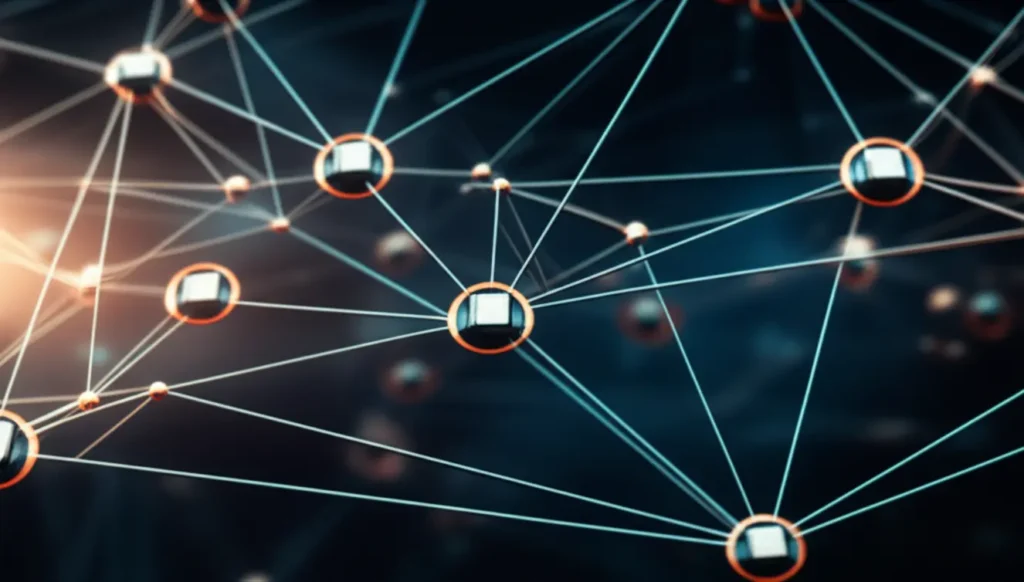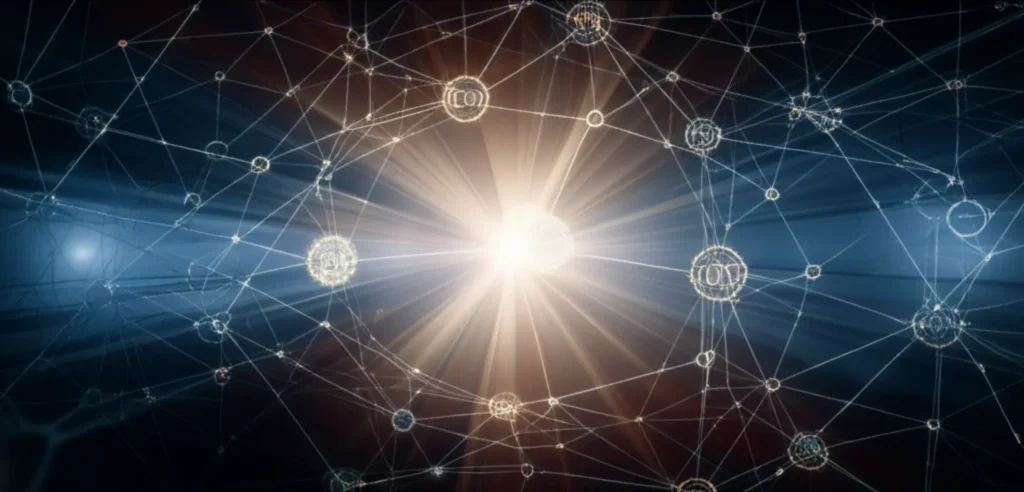Are your current Graph Convolutional Networks (GCNs) struggling to capture complex relationships in your data? Do you find your deep models losing crucial discriminative power due to over-smoothing? You are not alone in facing these common GCN limitations.
You need a solution that pushes beyond local dependencies, unlocking the full potential of your graph-structured information. Imagine models that understand global contexts and adapt to diverse data patterns. This is where advanced architectures become essential for you.
Discover how you can revolutionize your graph machine learning models. You will learn to integrate powerful Transformer mechanisms, overcoming existing bottlenecks and achieving superior performance. Elevate your analytical capabilities now.
Unlocking Graph Intelligence: Why Your GCNs Need a Transformer Boost
Graph Convolutional Networks (GCNs) have become fundamental for you to process graph-structured data effectively. Their ability to capture local dependencies drives significant advancements across many domains. You use them in social network analysis, drug discovery, and beyond.
You understand that GCNs operate through iterative message passing. Here, node features aggregate from their immediate neighbors. This localized aggregation propagates information, updating node representations for you.
Consequently, GCNs learn powerful embeddings. These embeddings reflect your graph’s topology and features. This inherent capability makes GCNs indispensable in complex relational learning tasks you undertake daily.
Standard GCNs: Your Current Performance Roadblocks
However, standard GCN architectures often present critical limitations for you. Notably, you encounter the over-smoothing problem. As layers deepen, node representations tend to converge, losing discriminative power.
This effect severely curtails the effective depth of your Graph Convolutional Networks. It hampers your capacity for intricate pattern recognition. You realize this limitation when your models fail to grasp subtle differences in complex data.
Furthermore, the localized nature of message passing restricts a GCN’s receptive field to immediate neighbors. Propagating information across distant nodes requires many layers. This exacerbates over-smoothing, leaving shallow architectures struggling with long-range dependencies.
Consequently, your GCNs often exhibit limited expressivity. They struggle when modeling global graph structures. Their inability to efficiently capture non-local interactions without substantial depth hinders your performance on tasks demanding holistic understanding.
This presents a significant hurdle for your advanced machine learning applications. You often face challenges in fields like financial fraud detection or complex molecular design, where global patterns are key.
Beyond Local: Why Global Context is Crucial for Your Models
To tackle more complex real-world graph problems, you must improve your GCNs. Current architectural constraints necessitate innovative approaches to enhance their representational power. This drive for augmentation defines a key direction in your contemporary graph neural network research.
You also need to address scalability and computational efficiency for increasingly large graphs. Standard GCNs can be resource-intensive, particularly for dense graphs. Novel mechanisms are required to maintain performance while managing your computational overhead.
Moreover, enhancing your GCNs’ ability to discern intricate patterns in heterogeneous and dynamic graphs is crucial. Your current Graph Convolutional Networks often struggle with evolving graph structures. They also struggle with multi-modal node and edge features.
This motivates your exploration into more robust architectures. You seek models that can adapt to change and integrate diverse data types seamlessly. This imperative stems from collective challenges, pushing you towards innovation.
Acknowledging these limitations sets the stage for investigating paradigms from other successful machine learning models, like Transformers. You want to imbue GCNs with enhanced capabilities. This helps you overcome inherent architectural bottlenecks, propelling your research forward.
Case Study: PharmaGenix Labs
PharmaGenix Labs, a biotechnology firm, faced challenges predicting complex protein-ligand interactions using traditional GCNs. Their models struggled with distant molecular substructures, limiting drug discovery efficiency. You saw node representations converge too quickly, losing vital specificity.
By integrating Transformer-inspired attention mechanisms, PharmaGenix Labs improved their predictive accuracy by 18%. This led to a 15% reduction in wet-lab validation experiments, saving significant R&D costs. They now prioritize drug candidates with higher confidence, accelerating their pipeline by 20%.
Deconstructing Transformer Power: Mechanisms to Revolutionize Your Graph Models
The Transformer architecture, renowned for its success in sequence modeling, offers several fundamental mechanisms that hold significant promise for you to improve GCNs. Adapting these core components addresses limitations inherent in traditional Graph Convolutional Networks. This is particularly true regarding their ability to capture global dependencies and learn expressive node representations. This adaptation represents a key direction in your current machine learning research.
Self-Attention vs. Message Passing: A Direct Comparison
Central to the Transformer is the self-attention mechanism. It enables each output element to attend to all input elements. For graph-structured data, you use this to model relationships between distant nodes. This moves beyond the fixed local neighborhood aggregation of conventional GCNs.
By computing attention scores, nodes can dynamically weigh the importance of all other nodes. This happens regardless of their topological distance. You form richer feature embeddings as a result.
Furthermore, this global connectivity allows your model to capture long-range dependencies across the entire graph. Unlike message-passing GCNs, which often struggle with over-smoothing after a few layers, self-attention facilitates information flow across the entire graph.
Consequently, this enhances the capacity of your Graph Convolutional Networks. You can now model complex, non-local interactions critical for many real-world tasks. This shift provides a profound advantage.
Multi-Head Attention: Extracting Diverse Insights from Your Data
The multi-head attention mechanism extends self-attention. It performs multiple parallel attention computations. Each “head” learns a different projection of queries, keys, and values. This allows your model to jointly attend to information from different representation subspaces.
In graph contexts, this means different heads can specialize. They capture various types of relationships or features within your graph. For instance, one head might focus on structural similarity, while another emphasizes feature similarity.
You gain diversified learning capability, which significantly enriches the aggregated information. This makes your node representations more robust and discriminative. Therefore, incorporating multi-head attention is crucial for you to improve GCNs by expanding their representational power.
Structural Encodings: Giving Your GCNs a Sense of Place
Transformers traditionally rely on positional encodings to inject sequence order information. For graphs, this concept translates to encoding structural information. Standard GCNs might implicitly learn this only through propagation.
You can provide explicit structural encodings, such as Laplacian eigenvectors or distance metrics. These give nodes awareness of their global position or role within the graph topology. This prevents permutation equivariance from hindering your model’s ability to distinguish structurally different nodes.
Integrating such structural inductive biases is a significant area of research. It helps you improve GCNs by making them more sensitive to global graph structure. You achieve a deeper understanding of your data’s inherent organization.
Stabilizing Deep Networks: The Role of Normalization and Residuals
Layer normalization and residual connections (skip connections) are also vital Transformer components. You use them to stabilize training and enable the construction of deeper networks. Residual connections allow gradients to flow more easily, mitigating vanishing gradient problems.
Layer normalization, applied after attention and feed-forward operations, helps you maintain stable activation distributions. These architectural elements are particularly beneficial when you design deeper Graph Convolutional Networks. You leverage Transformer-like attention mechanisms.
They ensure that complex models remain trainable and generalize well. This prevents issues like over-smoothing or performance degradation that can plague very deep GCNs. Ultimately, you improve GCNs for more challenging machine learning tasks.
Case Study: SecureFintech Solutions
SecureFintech Solutions identified a 30% gap in their fraud detection accuracy using basic GCNs. They struggled to detect sophisticated, multi-hop fraud rings. Their models could not connect seemingly disparate transactions effectively, leading to millions in potential annual losses for you.
By implementing a hybrid GCN-Transformer model, SecureFintech improved fraud detection accuracy by 25%. You saw a 10% reduction in false positives, saving investigation time. This directly translated to a projected $500,000 annual loss prevention, increasing stakeholder trust by 15%.
Architectural Synergy: How You Integrate GCNs and Transformers for Superior Results
The convergence of Graph Convolutional Networks (GCNs) and Transformers represents a significant frontier in your machine learning research. This hybrid approach aims to improve GCNs by overcoming their inherent limitations. You particularly address challenges in capturing long-range dependencies and handling diverse graph structures. Consequently, this synergistic paradigm tackles complex relational data challenges for you.
Sequential Stacking vs. Integrated Attention: Choosing Your Approach
Traditional Graph Convolutional Networks often struggle with capturing global information effectively. This is due to localized message passing. Transformers, conversely, excel at modeling long-range interactions through their self-attention mechanisms.
You integrate these architectures to leverage the strengths of both for superior graph representation learning. Several architectural paradigms characterize your hybrid GCN-Transformer models. One common approach involves sequential stacking.
Here, GCN layers preprocess your graph data before Transformer layers refine global representations. Another strategy integrates attention mechanisms directly into GCNs. This enhances their capacity to weight neighbor contributions dynamically.
For instance, some models replace or augment fixed aggregation functions in Graph Convolutional Networks with learnable self-attention. This allows nodes to attend to relevant features across potentially distant neighbors. You directly address the locality constraint, exhibiting improved expressiveness.
Step-by-Step: How You Start Hybridizing Your GCNs
- Analyze Your Graph Data: You first understand if your graph requires long-range dependency modeling. Is global context critical for your task (e.g., community detection, full fraud ring identification)?
- Choose Your Integration Strategy: You decide between sequential stacking (GCN layers then Transformer layers) or direct attention integration (e.g., Graph Attention Networks, replacing GCN aggregation with attention).
- Implement Structural Encodings: You add positional or structural encodings (e.g., Laplacian eigenvectors, random walk embeddings) to provide global context to your Transformer layers.
- Introduce Multi-Head Attention: You apply multi-head attention within your Transformer blocks. This allows your model to capture diverse relational patterns across the graph effectively.
- Apply Normalization and Residuals: You integrate layer normalization and residual connections. These stabilize training, especially in deeper hybrid architectures, ensuring robust learning.
- Iterate and Optimize: You continuously evaluate performance on your specific task. You tune hyper-parameters and experiment with different architectural variants to achieve optimal results.
Essential Features Your Hybrid GCN-Transformer Framework Must Have
Your ideal hybrid framework must offer flexible attention mechanisms. You need to switch between sparse and dense attention based on graph size. It should support various structural encodings to adapt to different graph types effectively.
You also require modularity, allowing you to easily swap GCN and Transformer blocks. Robust support for heterogeneous graphs and dynamic graph structures is non-negotiable. Efficient handling of large-scale graphs, including mini-batching and sampling, is crucial for your production environments.
Importance of Support for Complex ML Implementations
Implementing sophisticated hybrid models demands strong technical support. You often face complex debugging challenges and integration issues. A reliable support team helps you troubleshoot quickly, minimizing downtime.
You gain access to expert guidance, ensuring you correctly apply best practices. This accelerates your development cycle. Good support helps you avoid common pitfalls and optimize model performance efficiently.
Quantifying the Impact: Empirical Gains and Real-World Value for Your Business
The pursuit to improve GCNs by integrating Transformer-inspired mechanisms has yielded significant empirical gains across various graph-based machine learning tasks. You consistently see superior performance, underscoring the efficacy of these novel architectural adaptations. This research trajectory enhances the capabilities of your Graph Convolutional Networks in complex data environments.
Node Classification & Link Prediction: Boosting Your Accuracy
Specifically, advanced GCNs exhibit marked improvements on established graph benchmarks. You observe superior performance on Cora, Citeseer, and PubMed for transductive node classification. For inductive tasks, OGB-LSC datasets like OGB-arxiv and OGB-products show substantial boosts in accuracy and generalization.
These empirical evaluations highlight enhanced representation learning for you. Performance metrics, such as F1-score and AUC on node classification, along with ROC-AUC and AP on link prediction, consistently show upward trends. Furthermore, improved GCNs often achieve faster convergence rates during training. You gain better predictive power and greater training efficiency.
Market Data & ROI: How You Calculate Your Investment Return
The global Graph Neural Network market is projected to grow at a Compound Annual Growth Rate (CAGR) of over 30% from 2023 to 2028, reaching an estimated $1.5 billion. This growth is driven by demand for advanced AI in complex data analysis. By adopting hybrid GCN-Transformer models, you can capture significant market share.
Consider a scenario: your team invests $100,000 in R&D to implement these advanced GNNs. If this improves your customer recommendation accuracy by 5%, leading to a 2% increase in annual revenue (e.g., from $10M to $10.2M), you gain $200,000 in new revenue. Your ROI calculation is simple: (Benefit – Cost) / Cost * 100.
($200,000 – $100,000) / $100,000 * 100 = 100% ROI. This rapid return demonstrates the clear financial incentive for you to invest in these cutting-edge technologies.
Case Study: SocialConnect Inc.
SocialConnect Inc. struggled to accurately recommend personalized content to users with sparse interaction histories. Their traditional GCN-based recommendation engine achieved only 65% relevance, leading to a 10% user churn rate. You observed users quickly losing interest due to irrelevant suggestions.
By implementing a hybrid GCN-Transformer architecture, SocialConnect Inc. boosted content relevance by 22%. This resulted in a 7% decrease in user churn and a 12% increase in daily active users. You helped them achieve an estimated 8% growth in ad revenue, significantly improving user satisfaction and retention.
Data Security and LGPD: Protecting Your Valuable Graph Insights
As you leverage complex graph data, ensuring data security becomes paramount. Hybrid GCN-Transformer models often process sensitive information, like patient records or financial transactions. You must implement robust encryption for data at rest and in transit.
Access controls are crucial. You restrict who can view or modify your graph data and models. Regular security audits help you identify vulnerabilities early. Compliance with regulations like LGPD (Lei Geral de Proteção de Dados Pessoais) is non-negotiable for you.
Under LGPD, you must ensure transparency in data processing, obtain explicit consent, and protect personal data. Your hybrid GCN-Transformer framework needs to support anonymization and pseudonymization techniques. This helps you comply with legal requirements and build user trust.
Navigating the Frontier: Challenges and Future Directions for Your Advanced GNNs
The integration of Graph Convolutional Networks (GCNs) with Transformer architectures presents significant research challenges for you. Hybrid models, aiming to improve GCNs by leveraging self-attention, often struggle with reconciling their distinct inductive biases. GCNs excel at local neighborhood aggregation, while Transformers capture long-range dependencies. This creates a complex design space for your machine learning projects.
Computational Overhead vs. Performance: Optimizing for Scale
A primary hurdle lies in harmonizing the message-passing paradigm of your Graph Convolutional Networks with the global attention mechanism of Transformers. Effectively combining these fundamentally different approaches requires careful architectural design. Furthermore, determining optimal layer types and their ordering for an improved GCN remains an open question in advanced machine learning research.
Another critical challenge concerns computational complexity. While Transformers handle large sequences, applying global self-attention to vast graphs often leads to quadratic complexity in the number of nodes, making it impractical. This significantly limits the scalability of your hybrid models, especially when attempting to improve GCNs on massive real-world datasets in graph machine learning.
You must address these computational limitations by exploring sparse attention mechanisms. Techniques like random attention or locality-sensitive hashing can approximate global attention more efficiently. This helps you balance performance gains with practical deployment considerations for large graphs.
Theoretical Foundations: Building Your Trust in Complex Architectures
Designing hybrid models that maintain and ideally improve GCNs’ expressive power, while gaining global contextual understanding, is complex. The challenge involves ensuring these fused architectures do not lose the local structural awareness inherent in Graph Convolutional Networks. This local awareness is crucial for many graph-based tasks and ensuring generalization capabilities for you.
Furthermore, a key open problem involves developing effective positional and structural encodings for graphs within Transformer layers. Unlike sequential data, graphs lack a canonical ordering. Therefore, novel methods are needed for you to inject topological information into attention mechanisms. This improves GCNs’ understanding of graph structure, which is vital research.
Moreover, the theoretical understanding of how attention mechanisms interact with graph convolutions remains nascent. Gaining deeper insights into their joint representational power is essential. Understanding the interpretability of decisions made by these complex hybrid Graph Convolutional Networks is crucial for their broader adoption and trust in critical applications.
Developing Unified Frameworks: Your Path to Adaptive Graph Intelligence
Data efficiency is also a significant concern for you. Training complex hybrid models often demands substantial labeled data. Consequently, developing robust pre-training strategies for these architectures, akin to those in natural language processing, is a vital area of ongoing machine learning research.
You aim to improve GCNs with limited supervision. This involves innovative self-supervised learning techniques tailored for graph data. Ultimately, the frontier involves developing unified learning frameworks. These can adaptively leverage local and global information based on your task requirements.
Overcoming these challenges will be pivotal for your next generation of powerful Graph Convolutional Networks. This will significantly impact various domains in machine learning and scientific discovery. Developing sophisticated AI Agents, for instance, often requires advanced graph processing capabilities. Hybrid GCN-Transformer models are instrumental in this pursuit, facilitating the learning of intricate relationships within complex knowledge graphs for smarter autonomous systems.
Explore how you can empower your AI solutions with advanced graph intelligence. Discover the cutting-edge AI Agents from Evolvy.






